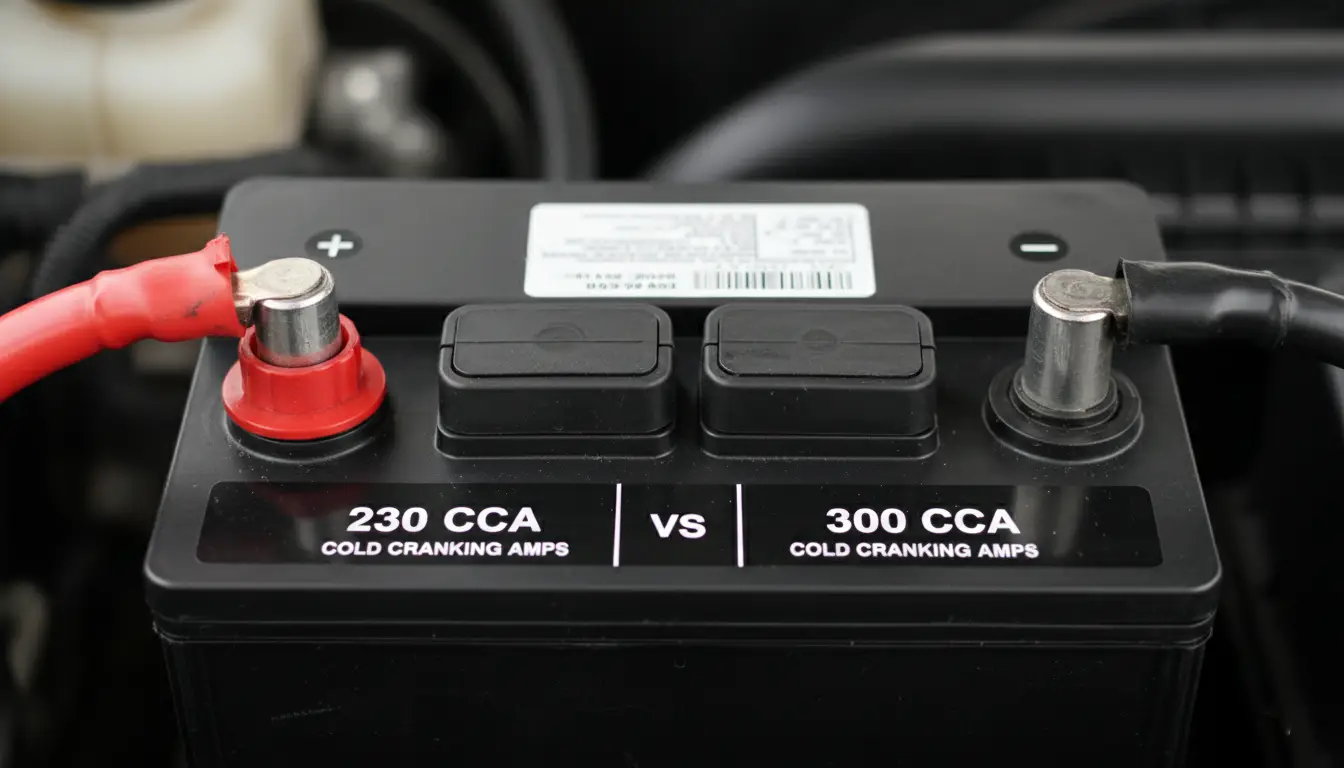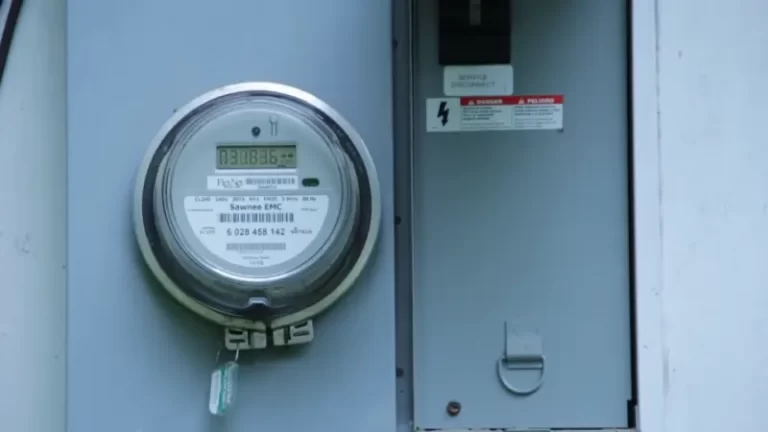230 CCA vs 300 CCA: Don’t Kill Your Mower, Read This First!
You turn the key on your riding mower, and instead of a roar, you get a click. Or a slow, agonizing groan. It’s a frustrating moment that often points to one culprit: a weak or dead battery. But when you go to buy a replacement, you’re faced with a confusing choice of numbers, specifically CCA. Is 230 CCA enough? Do you need to spend more for 300 CCA?
Making the wrong choice isn’t just an inconvenience. It can lead to premature battery failure, strain on your mower’s starting system, and wasted money. Understanding the difference between these ratings is crucial to keeping your equipment ready to work when you are.
You'll Learn About
What is CCA and Why Does It Actually Matter?
Before diving into a direct comparison, it’s essential to understand what you’re even looking at. The numbers aren’t arbitrary; they represent a critical performance metric that can make or break your engine’s ability to start, especially when conditions aren’t perfect.
Decoding the Numbers: CCA Explained Simply
CCA stands for Cold Cranking Amps. This is a standardized measurement of a battery’s ability to start an engine in cold temperatures. Specifically, it’s the number of amps a 12-volt battery can deliver at 0°F (-18°C) for 30 seconds while maintaining a voltage of at least 7.2 volts. The higher the CCA rating, the more starting power it has in the cold.
Think of it as the battery’s initial burst of power. This powerful push is what’s needed to turn over a cold engine, where the oil is thick and mechanical parts have more resistance. While you may not be mowing your lawn in freezing temperatures, this rating is a universal benchmark for a battery’s starting muscle.
The Cold Truth: How Temperature Impacts Your Battery
Temperature is the invisible enemy of all batteries. As the temperature drops, the chemical reactions inside a lead-acid battery slow down, reducing its ability to produce power. A battery’s performance can drop by as much as 35% at freezing and over 50% in extreme cold.
This is why CCA is so important. A battery with a higher CCA rating has more reserve power to overcome the sluggishness caused by cold weather. It ensures that even on a chilly spring morning or a cool autumn day, your mower has the punch it needs to get going without hesitation.
230 CCA vs 300 CCA: The Head-to-Head Breakdown
Now, let’s get to the core of the issue. You’re standing in the aisle, looking at two batteries that are physically the same size but have different CCA ratings and different price tags. The choice between 230 and 300 CCA depends heavily on your equipment and your environment.
Power on Paper: What’s the Real-World Difference?
The 70-amp difference between these two ratings is significant. A 300 CCA battery provides nearly 30% more starting power in cold conditions than a 230 CCA battery. This isn’t just a number on a label; it translates directly to real-world performance.
On a warm day, you might not notice a difference. But on a cooler day, or as the battery ages and naturally loses capacity, that extra 70 amps can be the difference between a quick start and a frustrating struggle. It provides a crucial buffer, ensuring reliability over the long term.

Price vs. Performance: Is More Always Better?
Higher CCA batteries almost always cost more. The key is determining if that extra cost is a necessary investment or an unnecessary expense. For a small push mower with a small engine used only in warm weather, a 230 CCA battery is often perfectly adequate.
However, for larger riding mowers, zero-turns, or any equipment with a bigger engine (typically over 15 horsepower), the jump to 300 CCA is a wise investment. These larger engines require more power to turn over, and a 230 CCA battery may be insufficient, leading to a shorter battery lifespan and potential starting issues.
Here is a direct comparison to help you visualize the differences and make a more informed decision.
| Feature | 230 CCA Battery | 300 CCA Battery |
|---|---|---|
| Starting Power | Standard | High Performance (Approx. 30% More) |
| Best For | Smaller engines (under 15 HP), push mowers, mild climates. | Larger engines (15+ HP), riding mowers, zero-turns, colder climates. |
| Cold Weather Performance | Adequate for moderate temperatures (above 32°F / 0°C). | Reliable in colder temperatures (down to 0°F / -18°C). |
| Longevity Under Strain | May have a shorter lifespan in demanding applications. | More durable and longer-lasting in larger equipment. |
| Average Cost | Lower | Higher |
Choosing the Right Battery: A Step-by-Step Guide
Making the right choice is simple if you follow a logical process. Don’t guess and hope for the best. A few minutes of checking can save you hours of frustration and a lot of money down the road.
Check Your Owner’s Manual: The Golden Rule
The single most important step is to consult your equipment’s owner’s manual. The manufacturer specifies the minimum CCA rating required for your engine. This isn’t a suggestion; it’s an engineering requirement for reliable operation. Never go below the manufacturer’s recommended CCA.
If your manual recommends 230 CCA, you can safely use a 230 CCA or a 300 CCA battery. If it recommends 300 CCA, you must use a battery with at least that rating. Using a 230 CCA battery in this case is asking for trouble.
Consider Your Climate: The Deciding Factor
Where do you live? If you’re in a region with cold spring and fall seasons where temperatures can dip near freezing, a higher CCA battery is a smart choice. The extra power will ensure your mower starts reliably when you need it for that first or last mow of the season.
For those in consistently warm climates, the CCA rating is slightly less critical, but it still serves as a good indicator of the battery’s overall quality and starting power. This is where you might feel confident choosing the right tools for the job, whether it’s the right battery or figuring out the best power tool ecosystem for all your projects.
Engine Size and Type: Matching Power to Need
The size of your engine is a major factor. A small single-cylinder engine on a push mower simply doesn’t need the same cranking power as a large V-twin engine on a garden tractor. A good rule of thumb is that engines over 15 HP, and especially those over 20 HP, benefit significantly from a 300 CCA or higher battery.
Think about the workload. Larger engines have more mass to move, and a more powerful battery reduces the strain on the starter motor and ensures a cleaner, faster start.
Common Mistakes That Will Cost You Money
It’s easy to fall into common traps when buying a battery. Many people make assumptions based on myths or incomplete information, which can lead to poor performance and premature replacement costs.
The “Bigger is Better” Myth Debunked
While you should never go below the recommended CCA, going excessively high isn’t always better. Your starter will only draw the amount of amperage it needs to start the engine. Installing a 500 CCA car battery in a mower that requires 230 CCA won’t provide any extra performance benefit.
It won’t harm your electrical system, but you’ll have spent extra money for power you will never use. Stick to the manufacturer’s recommendation or a modest step up (like from 230 to 300 CCA) for a reasonable performance boost.
Ignoring Your Climate: A Recipe for Disaster
One of the biggest mistakes is buying a battery based solely on price without considering the local climate. A budget 230 CCA battery might seem like a great deal in the summer, but it could leave you stranded on the first cool morning of fall. Always factor in the lowest temperatures you’re likely to operate your equipment in.
Properly maintaining your equipment for the climate, like dealing with sunken patio drainage before the rainy season, prevents bigger problems later. The same principle applies to choosing the right battery for your weather conditions.
Focusing Only on CCA (And What Else to Look For)
CCA is critical for starting, but it’s not the only thing to consider. Look at the battery’s warranty, as a longer warranty often indicates higher quality construction. Also, check the date code to ensure you’re buying a fresh battery, not one that has been sitting on a shelf for months losing its charge.
Pay attention to the terminal configuration (top posts, side posts, etc.) and the physical dimensions (Group Size, like U1) to ensure it will fit correctly in your mower’s battery tray and connect to the cables properly.
The Hidden Dangers of Using the Wrong CCA
Choosing incorrectly isn’t just about poor performance. In some cases, it can cause undue stress on your equipment’s components, leading to more expensive repairs down the line.
Can a Higher CCA Battery Damage Your Starter?
This is a common concern, but the answer is generally no. A higher CCA battery will not damage your starter motor or electrical system. The starter only draws the current it needs. The higher rating simply means the battery has more available power in reserve, which can actually reduce strain on the starter by providing a strong, consistent current.
The danger lies not in too much CCA, but in too little. An undersized battery forces the starter to work harder, which can lead to overheating and premature failure.
The Slow Death of an Underpowered Battery
When you use a battery with a CCA rating that is too low, you are setting it up for failure. Every time you start the engine, you are straining the battery to its absolute limit. This deep discharging and stress can cause the lead plates inside to degrade quickly, a process known as sulfation.
This damage is irreversible and dramatically shortens the battery’s lifespan. You may save a few dollars initially by buying the cheaper 230 CCA battery, but you’ll likely be replacing it much sooner than a correctly-sized 300 CCA battery, costing you more in the long run.
Final Verdict: Making the Confident Choice
The choice between a 230 CCA and a 300 CCA battery comes down to a simple formula: respect the manufacturer’s recommendation and consider your climate and engine size. For smaller mowers in mild climates, a 230 CCA battery is often sufficient.
However, for most riding mowers, garden tractors, and zero-turns with engines over 15 HP, or for anyone operating in cooler climates, the 300 CCA battery is the safer, more reliable, and often more cost-effective choice in the long run. The extra starting power provides peace of mind and ensures the longevity of both your battery and your mower’s starting system.




